
Aleuts are the Indigenous people of the Aleutian Islands, which are located between the North Pacific Ocean and the Bering Sea. Both the Aleuts and the islands are politically divided between the US state of Alaska and the Russian administrative division of Kamchatka Krai. This group is also known as the Unangax̂ in Unangam Tunuu, the Aleut language. There are 13 federally recognized Aleut tribes in the Aleut Region of Alaska. In 2000, Aleuts in Russia were recognized by government decree as a small-numbered Indigenous people.

Scarification involves scratching, etching, burning/branding, or superficially cutting designs, pictures, or words into the skin as a permanent body modification or body art. The body modification can take roughly 6–12 months to heal. In the process of body scarification, scars are purposely formed by cutting or branding the skin by various methods. Scarification is sometimes called cicatrization.

The Marquesas Islands are a group of volcanic islands in French Polynesia, an overseas collectivity of France in the southern Pacific Ocean. Their highest point is the peak of Mount Oave on Ua Pou island, at 1,230 m (4,035 ft) above sea level.
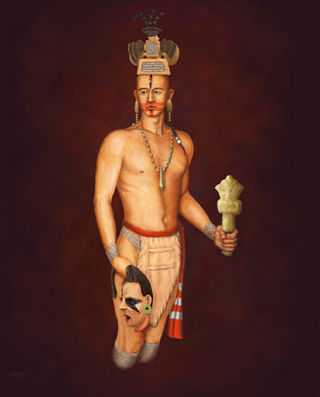
Headhunting is the practice of hunting a human and collecting the severed head after killing the victim, although sometimes more portable body parts are taken instead as trophies. Headhunting was practiced in historic times in parts of Europe, East Asia, Oceania, Southeast Asia, South Asia, Mesoamerica, South America, West Africa and Central Africa.

A club is a short staff or stick, usually made of wood, wielded as a weapon since prehistory. There are several examples of blunt-force trauma caused by clubs in the past, including at the site of Nataruk in Turkana, Kenya, described as the scene of a prehistoric conflict between bands of hunter-gatherers 10,000 years ago.
The Lusitanians were an Indo-European-speaking people living in the far west of the Iberian Peninsula, around roughly to Central Portugal and areas of modern-day Extremadura and Castilla y Leon of Spain. After its conquest by the Romans, the land was subsequently incorporated as a Roman province named after them (Lusitania).

Being an indigenous tribe in Borneo, the Kayan people are similar to their neighbours, the Kenyah tribe, with which they are grouped together with the Bahau people under the Apo Kayan people group. The Kayan people are categorised as a part of the Dayak people. They are distinct from, and not to be confused with, the Kayan people of Myanmar.

The Paiwan are an indigenous people of Taiwan. They speak the Paiwan language. In 2014, the Paiwan numbered 96,334. This was approximately 17.8% of Taiwan's total indigenous population, making them the second-largest indigenous group.
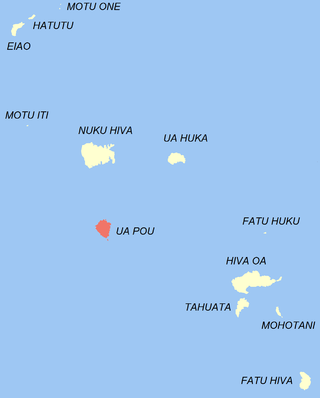
Ua Pou is the third largest of the Marquesas Islands, in French Polynesia, an overseas territory of France in the Pacific Ocean.
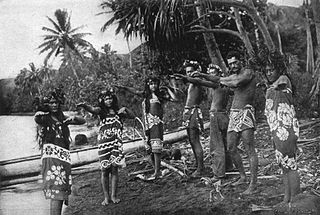
The Marquesas Islands were colonized by seafaring Polynesians as early as 300 AD, thought to originate from Tonga and the Samoan Islands. The dense population was concentrated in the narrow valleys and consisted of warring tribes.

Toi moko, or Mokomokai, are the preserved heads of Māori, the indigenous people of New Zealand, where the faces have been decorated by tā moko tattooing. They became valuable trade items during the Musket Wars of the early 19th century.

ʻOro is a god in Tahiti and Society Islands mythology. The veneration of ʻOro, although practiced in varying intensity among the islands, was a major religion of the Society Islands in the 17th and 18th centuries, especially Tahiti, Tahaa, Moorea, and Raiatea. On Tahiti, ʻOro was the main deity and the god of war. The secret society of Arioi was closely linked because of its rites. On the Marquesas Islands, ʻOro bore the name Mahui.
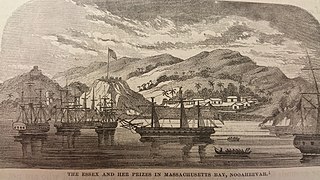
The Nuku Hiva Campaign was an armed conflict between the United States and the Polynesian inhabitants of Nuku Hiva during the War of 1812. It occurred in 1813, following Captain David Porter's decision to sail his fleet to the island for repairs before continuing his raid against British shipping. Upon arrival, the Americans became involved in a tribal war and allied themselves with the Te I'i people against the Happah and Tai Pi clans.
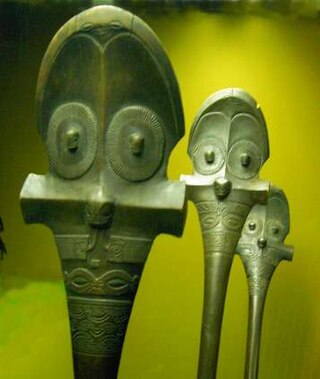
Wood carving in the Marquesas Islands is a practice undertaken by many of the local master craftsmen, who are known as tuhuna. The tuhuna are not only adept at wood carving, but are also skilled at tattoo art and adze manufacture. Marquesan wooden crafts are considered among the finest in French Polynesia; they are highly sought after, and of consistently high quality, although weaving, basket-making, and pareu painting is more popular, especially among women artisans. Paul Gauguin noted the artistic sense of decoration of the Marquesas and appreciated the "unheard of sense of decoration" in their creative art forms.
An overmodelled skull is a skull covered with various materials to reconstruct the appearance of a human head. This technique of art and religion is described in many countries throughout the ages.

A Sali or Cali or Tebetebe is a war club from Fiji.
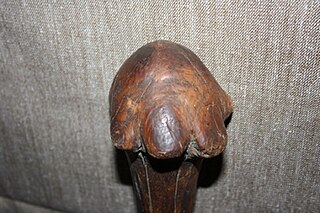
A Kanak war club is a traditional weapon (mace) of the Kanak tribes of New Caledonia.
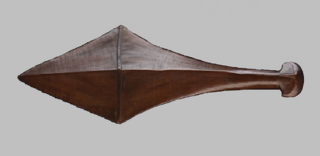
The supi is a war club of the Solomon Islands.

The Moriori genocide was the mass murder and enslavement of the Moriori people, the indigenous ethnic group of the Chatham Islands, by members of the mainland New Zealand iwi Ngāti Mutunga and Ngāti Tama from 1835 to 1863. The invaders murdered around 300 Moriori and enslaved the remaining population, causing the population to drop from 1,700 in 1835 to only 100 in 1870.
During the American Indian Wars of the mid to late 19th century, Native American warriors of the Great Plains, sometimes referred to as braves in contemporary colonial sources, resisted westward expansion onto their ancestral land by settlers from the United States. Though a diverse range of peoples inhabited the Great Plains, there were a number of commonalities among their warfare practices.























